Button Maker Guide – The Best Button Makers
Home » Blog » Best of Craft Guides » Button Maker Guide – The Best Button Makers
-
Daniela Kretchmer
- Updated: Apr 15, 2025
- Craft Supplies
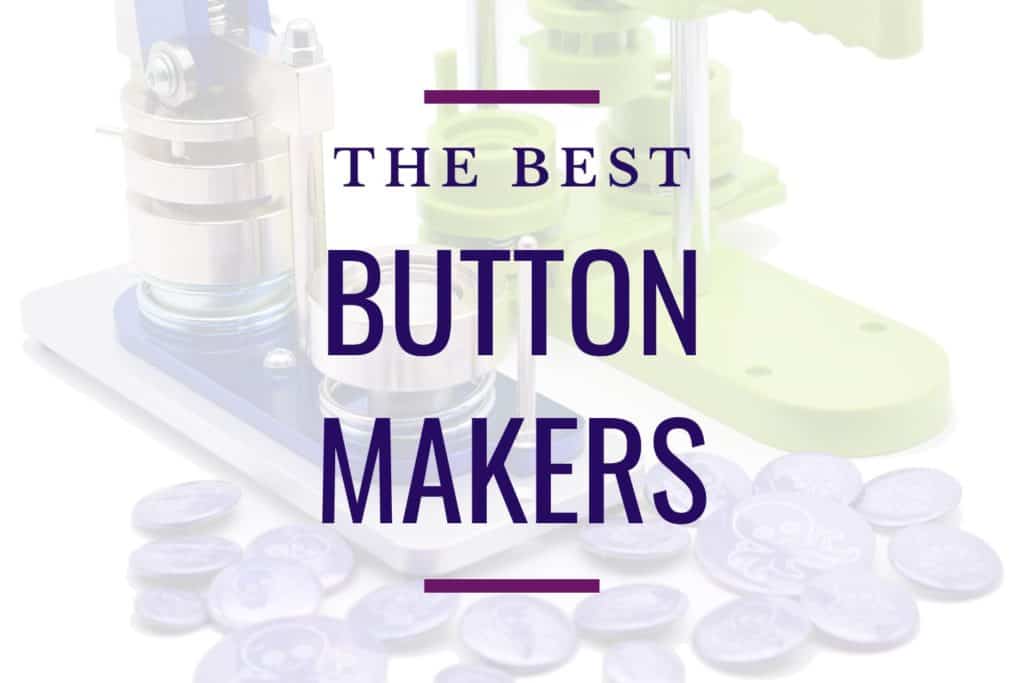
Use this guide to find the right button maker for you. Learn about all the different types of button makers from ones that can make different sizes to ones that can make fabric buttons.
Table of Contents
Note: Some links in this post may contain affiliate links, which means at no cost to you, I may earn a commission.
What is a Button Maker?
As the name suggests, a button maker is a tool that makes pin back buttons. The one caveat to this is the fabric button maker, which makes buttons that you can sew on to items.
They also are called a button machine, button making machine, or a button press. The reason it’s referred to as a button press is because it works by pressing the different parts together.
If you want to make professional looking buttons, you’ll want to use a button maker. There are different styles and prices, depending on the type or size of button you want to make.
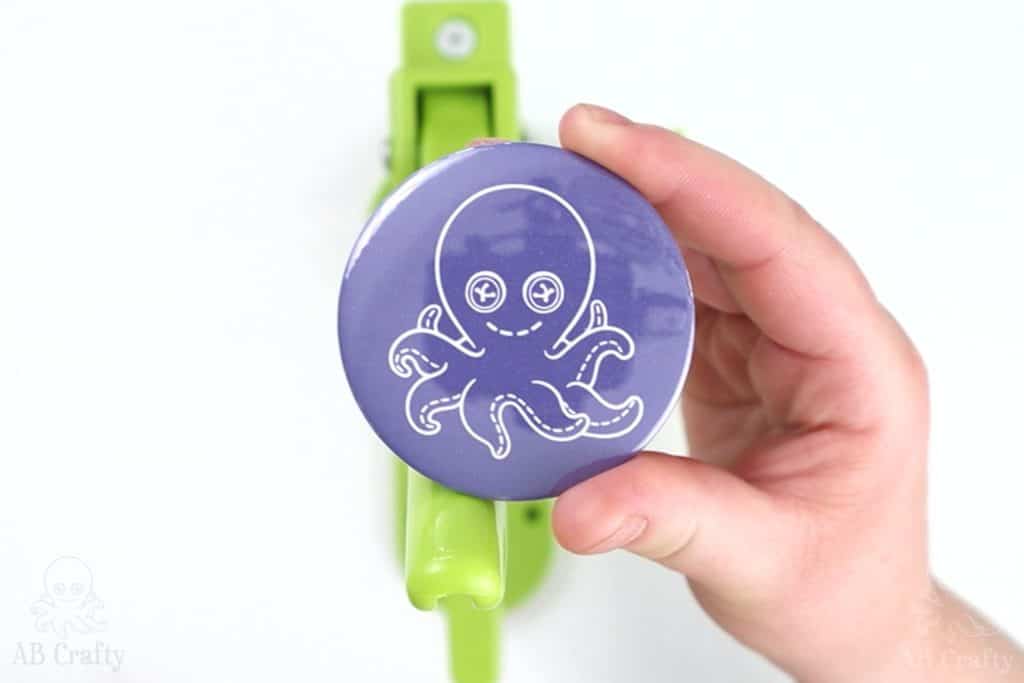
Plastic Button Maker vs Fabric Button Maker
There are two main categories of button makers: one for creating plastic buttons and another for making fabric-covered buttons.
The reason for needing separate machines for fabric buttons is because the fabric is pressed into the mechanism and secured differently. Unlike plastic buttons, fabric buttons don’t have a plastic piece covering them, so the press needs to secure the fabric in a different way.
Fabric button makers typically produce buttons with a backing that can be sewn onto various items such as clothing, accessories, or upholstery projects. On the other hand, plastic button makers primarily make pin back buttons that can be attached with a pin to clothing and other items. However, these button makers can also create different types of items using alternative backings such as magnets or bottle openers.
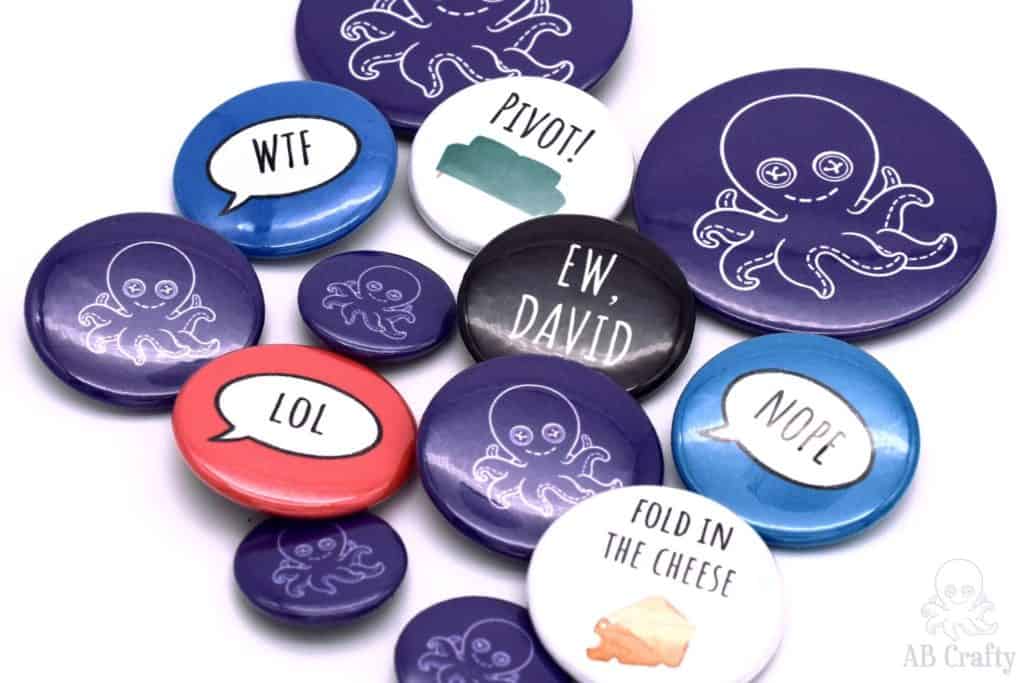
How to Choose a Button Maker
There are a few factors you need to consider when choosing a button maker. Answering each of these questions will help you decide on the right one for you.
1. Do you want to make plastic or fabric buttons?
When you’re searching for a button maker, you probably already have an idea of what you’re looking for. The first thing to consider is whether you want a plastic button making machine or one that works with fabric.
Are you planning to make pins or buttons that can be sewn onto other projects? Keep in mind that the type of machine you need will depend on whether you want fabric buttons that can be sewn on. It’s important to choose the right machine for your specific needs.
2. What type of backings do you want to be able to make?
Depending on the button maker you choose, there are different backing options available. If you opt for a plastic button maker, you’ll have more choices than just the traditional pin back. I’ve come across various backings like magnets and bottle openers that can be used. So, if you’re interested in creating a variety of items, it’s best to go with a regular button press instead of a fabric one.
On the other hand, if your goal is to make buttons that can be sewn on, then a fabric button maker is what you’ll need.
3. How big of buttons do you want to make?
Once you know the types of buttons you’re looking to make, the next step is to decide the size of buttons you want to make. Typically button makers can only make a single size button. They typically range from 1-3 inches, but I’ve seen them as small as 7/8″ and as large as 6 inches.
Therefore if you know you only need to make one size of buttons you can save some money and get a single button machine that makes one size.
If you need to make multiple sizes then you have 2 options. Option 1 is to get multiple button makers. Option 2 is to get one that can make multiple sizes. These come with different bases that you swap out to be able to make the different sizes. They’re naturally more expensive than a single button maker, but could be a good option if you have limited space or don’t want to buy two completely separate ones.
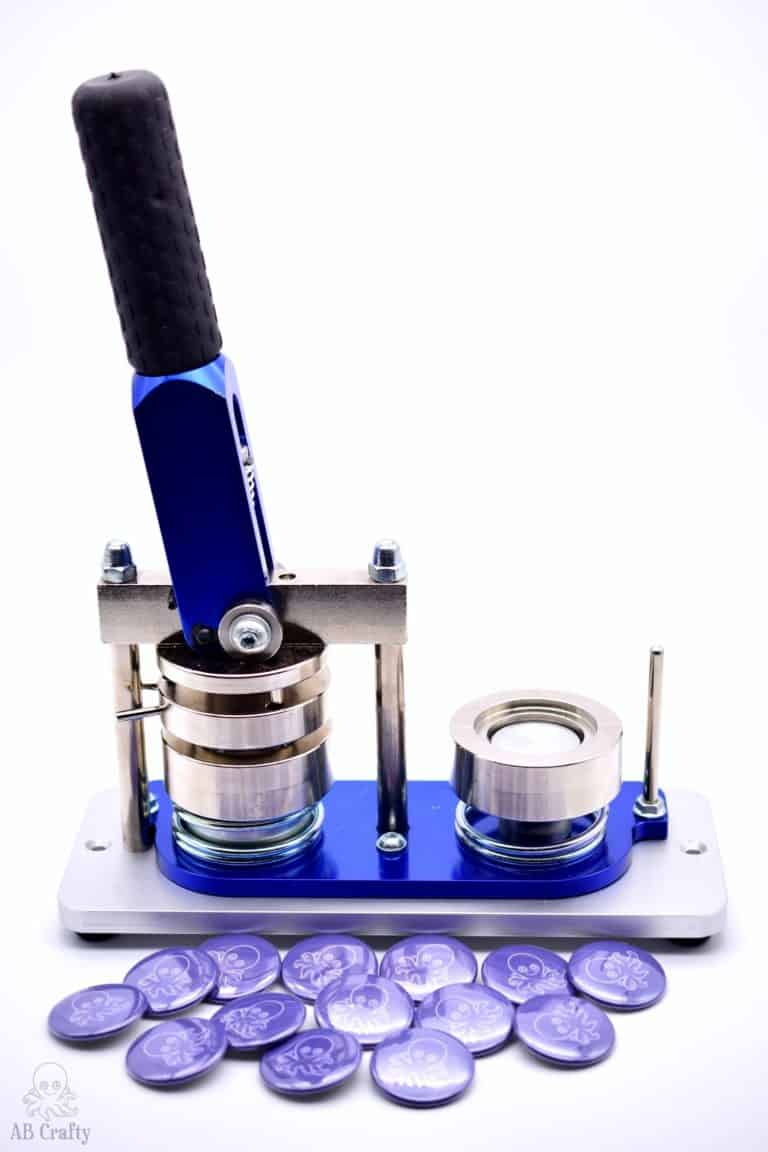
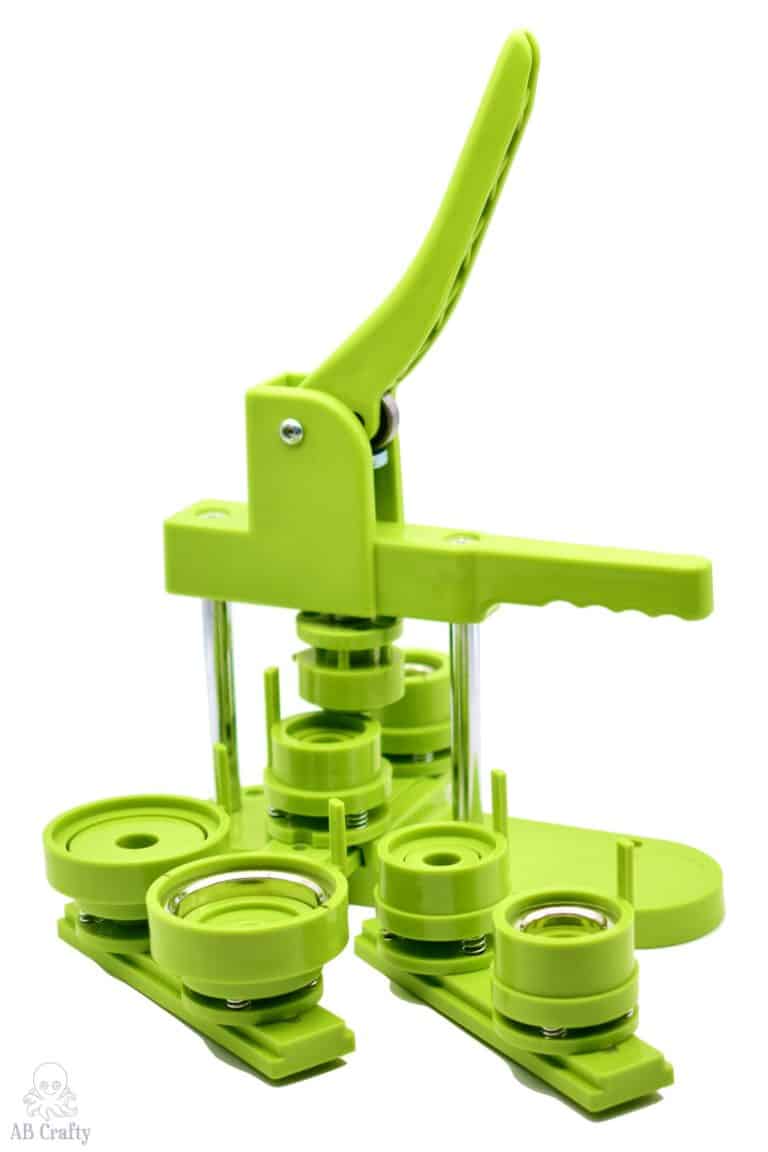
4. What shape of buttons do you want to make?
Chances are the answer to this question is round. However, there are some button makers that can make different sizes such as squares or rectangles. These are more rare so your options are more limited, but there are options for non-circular shapes.
5. Do you want a sliding or rotating base?
This is more of a personal preference, but it’s definitely something worth considering. So here’s the deal: the base of the machine can either rotate or slide. The main difference you’ll notice is when it comes to storage. If you go for one with a rotating base, it only takes up as much space as the base itself. On the other hand, if you opt for one with a sliding base, the slider sticks out a bit further since it’s perpendicular to the base.
Now, if you have a strong preference for a button maker that doesn’t stick out beyond its base, then you’ll want to look for one with a rotating base. It’s as simple as that!
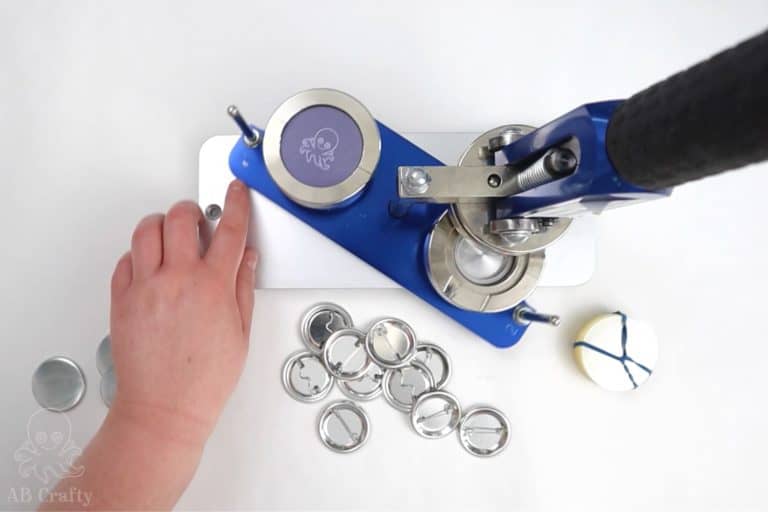
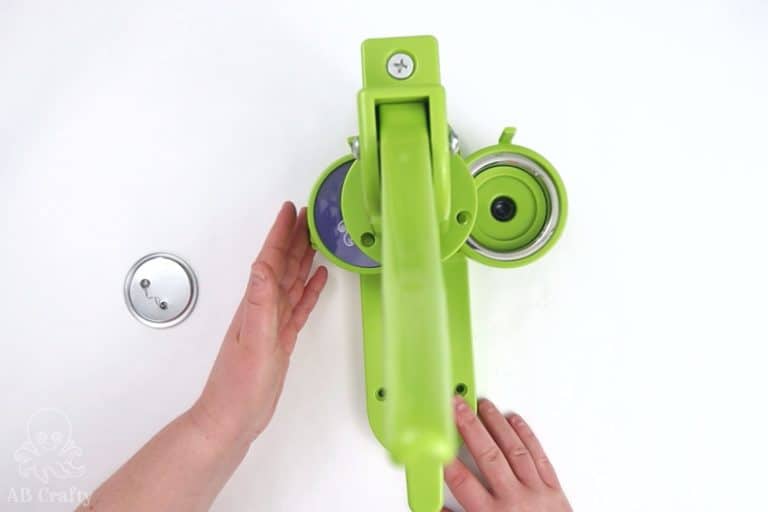
6. Lastly, how much money are you willing to spend?
There’s quite a range in prices for button making machines. The more durable ones are made mostly of metal, but they do cost more. On the other hand, there are cheaper options with plastic parts that help keep the costs lower, but they can be a bit finicky.
Here’s my recommendation: if you’re making buttons for fun and want to save some money, go for one of the great plastic options! However, if you plan on making buttons frequently, it’s worth investing a bit more in a durable metal machine.
Don’t forget to pin it so you can come back to it later!
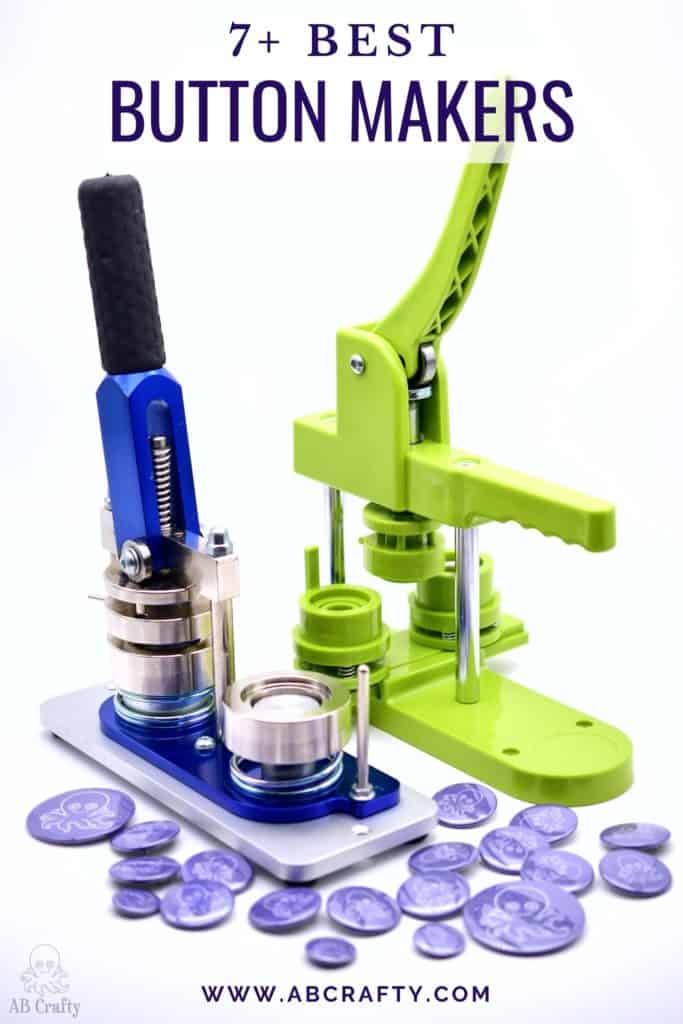
The Best Button Maker in Each Category
To make it easy, I’ve compiled a short list of the best button makers for different categories:
- Best Overall Value: 1 inch Rotating Base (Vevor)
- Best High-End Machine: UMakeButtons Machine (Amazon)
- Best Machine for Multiple Sizes: 1+1.25+2.25″ Button Maker Machine (Amazon) – this is the one I have!
- Best Fabric Machine: Fabric Cover Button Maker (Amazon)
- Best to Make Different Items and Shapes: We R Memory Keepers Button Press (Amazon)

